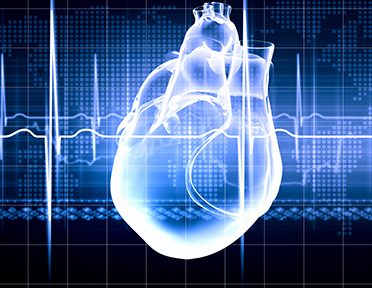
Researchers at Northwestern University and George Washington (GW) University report in the journal Science Advances that they have developed a postage stamp-sized dissolving cardiac device that can monitor and treat heart disease in the days, weeks, and months following a cardiac event. The flexible device was designed to dissolve inside the body once it is no longer needed—eliminating the need for extraction—and could be vital in addressing one-third of the 700,000 deaths in the U.S. annually that occur in the aftermath of a traumatic heart-related health event.
“Many deaths that occur following heart surgery or a heart attack could be prevented if doctors had better tools to monitor and treat patients in the delicate weeks and months after these events take place,” said Luyao Lu, PhD, an assistant professor in the department of biomedical engineering at GW, who co-led the work. “The tool developed in our work has great potential to address unmet needs in many programs of fundamental and translational cardiac research.”
The device uses an array of sensors and actuators and can perform more complicated investigations of heart activity than traditional implantable devices such as pacemakers. It can be placed on various sections of the heart to continuously provide data for clinicians in real time, and because it is mostly transparent, treating physicians can observe specific heart regions to make a diagnosis or provide treatment.
“Several serious complications, including atrial fibrillation and heart block, can follow cardiac surgeries or catheter-based therapies,” said study co-leader Igor Efimov, PhD, a professor of biomedical engineering and a professor of medicine in the cardiology division at Northwestern. “Current post-surgical monitoring and treatment of these complications require more sophisticated technology than currently available. We hope our new device can close this gap in technology. Our transient electronic device can map electrical activity from numerous locations on the atria and then deliver electrical stimuli from many locations to stop atrial fibrillation as soon as it starts.”
The newest device builds on ongoing work of the Efimov lab at Northwestern, which conducts research in the field of cardiovascular engineering, biology and physiology, imaging and medical device development. The main focus of the lab is to better understand the fundamental mechanisms of arrhythmogenesis and to develop technologies to arrest and treat cardiac arrhythmias.
Advances from the lab have included the development of a the first-ever transient pacemaker in 2021, developed in collaboration with Northwestern professor of materials science and engineering John A. Rogers. And earlier this year, the team introduced a graphene “tattoo” that is thinner than a human hair that attaches to the heart and acts like a traditional pacemaker.
The new device was tested in animal models and provides function beyond that of a normal pacemaker, which only provides data on whether the heart is beating or not. The new dissolving device can not only restore normal heart rhythms, but can provide data on which areas of the heart are performing well and which areas aren’t performing as they should. Because the device is largely transparent, researchers can also optically map physical attributes of the heart allowing them to better understand heart function and disease. After a period of time, the device made of FDA-approved biocompatible materials, dissolves similar to absorbable stitches.
“After heart surgeries, surgeons sometimes insert temporary wires, which are connected to external current generators, to provide electrical stimulation during temporary heart block caused by the surgery,” Efimov said. “Recently, we developed a bioresorbable pacemaker to replace such a wire. Post-operative atrial fibrillation requires a more complicated approach based on a multi-electrode array for sensing and stopping atrial fibrillation. Now, we present a novel technology to achieve this goal.”
According to the investigators the dissolving cardiac device could improve patient outcomes and reduce overall cardiac care costs by eliminating the need for surgical extraction of wires, as well as reduce the risk of postoperative infection.













